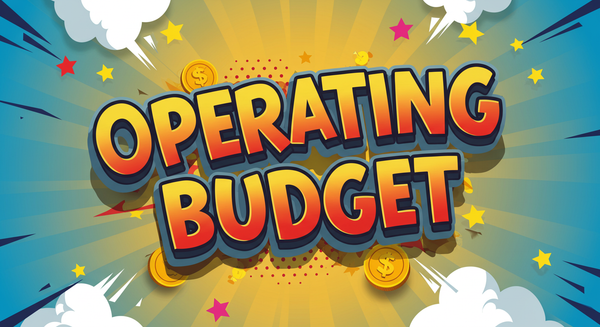Pass-Through Expenses in Property Management | The Complete Guide
Pass-through expenses are specific property-related costs billed directly to tenants above and beyond the standard base rent outlined in their lease agreements

In property management, pass-through expenses refer to property-related costs that landlords or property managers bill directly to tenants, separately from and in addition to their base rent.
These expenses typically include costs associated with Common Area Maintenance (CAM), property taxes, insurance premiums, utilities, and management fees incurred in the operation and upkeep of a property.
The underlying principle behind pass-through expenses is straightforward: landlords act as intermediaries, recovering operating costs from tenants to ensure the efficient and sustainable management of their rental properties.
It's important to note that the term "pass-through expenses" is distinct from "pass-through businesses", which refers to specific business structures—like partnerships, LLCs, and S-corporations—that pass profits directly to owners, avoiding corporate-level taxation.
Likewise, while related, pass-through expenses differ significantly from the 20% Pass-Through Tax Deduction (Qualified Business Income or QBI deduction), a specific IRS deduction available to qualifying businesses and rental activities.
In this guide I've designed it to provide landlords, property managers, real estate investors, and rental owners with a thorough understanding of pass-through expenses, clarifying their significance, the methods used to calculate and allocate them, the legal considerations involved, and best practices for managing these expenses effectively.
Whether you're looking to improve transparency with your tenants, optimize your property’s net operating income, or simply ensure compliance with relevant laws and regulations, this comprehensive resource will guide you every step of the way.
Legal Disclaimer: This article is for informational purposes only and does not constitute legal, tax, or financial advice. Always consult a qualified professional for advice tailored to your specific circumstances.
What Are Pass-Through Expenses?
Pass-through expenses are specific property-related costs billed directly to tenants above and beyond the standard base rent outlined in their lease agreements. Essentially, these expenses are incurred by landlords or property managers but are passed on to tenants as recoverable costs, reflecting the actual operating expenses necessary for maintaining and managing a property.
Common Categories of Pass-Through Expenses:
- Common Area Maintenance (CAM): These expenses cover upkeep and maintenance of shared areas such as lobbies, hallways, parking lots, landscaping, security, and cleaning services.
- Property Taxes: Taxes levied on the property, often allocated proportionally among tenants.
- Insurance: Premiums for property insurance covering structural damage, liability, and other property-specific risks.
- Utilities: Shared utilities including electricity, water, gas, waste management, and sewage services.
- Management Fees: Costs associated with professional property management services, administrative fees, or other direct management-related expenses.
Pass-through expenses directly impact a tenant's overall occupancy cost, influence lease negotiations, and affect property valuation and profitability for landlords and investors. On top of that, different lease structures (such as Gross Lease or Modified Gross Lease) can significantly alter how these expenses are managed and recovered from tenants.
Why Pass-Through Expenses Exist
Pass-through expenses exist primarily to align cost responsibilities between landlords and tenants clearly and equitably. By passing certain property-related costs directly to tenants, landlords ensure that tenants share in the actual operational expenses related to their occupancy and usage of the property.
This structure prevents landlords from absorbing fluctuating costs alone, thus maintaining stable income streams and predictable cash flow.
Without it, landlords could incur unexpected fluctuating costs that could handicap their ability to properly manage and maintain the rental property – to their own detriment, and that of their tenants.
Impact on Net Operating Income (NOI) and Property Valuation
Pass-through expense arrangements significantly influence a property's Net Operating Income (NOI)—the key metric used to determine its value. Because landlords can recover operating expenses directly from tenants, they enhance the predictability of NOI, thereby increasing the property's market appeal and overall valuation.
Properly managed expense pass-throughs help stabilize NOI, making properties more attractive to potential investors and lenders.

Example: Comparing Lease Structures
Consider two different lease structures—a Gross Lease and a Triple Net Lease (NNN). In a Gross Lease, tenants pay a fixed rent, and the landlord absorbs most property expenses. Conversely, in a Triple Net Lease, tenants pay base rent plus their proportionate share of all operating expenses, including taxes, insurance, and maintenance.
The Triple Net Lease arrangement clearly delineates financial responsibilities, often resulting in lower risk and greater transparency for landlords and tenants alike, compared to the Gross Lease where the landlord bears most cost uncertainties.
How Pass-Through Expenses Are Calculated
Pro-Rata Share Method
The most common approach to allocating pass-through expenses is the Pro-Rata Share Method, calculated as:
Base Year Structure
Under the Base Year structure, tenants pay only for increases in operating expenses above a predetermined base year amount, usually established at lease commencement. This method protects tenants from initial overcharges, aligning landlord and tenant interests.
Expense Stop Mechanism
An expense stop sets a predetermined expense threshold that the landlord covers. Any costs exceeding this limit become the responsibility of the tenant, ensuring landlords do not solely bear unexpected expense hikes.
Gross-Up Calculations and Caps
Gross-up adjustments account for occupancy variations, ensuring fair cost allocation among tenants by projecting operating expenses as if the property were fully occupied. Caps, on the other hand, limit annual expense increases (typically 3-7%) to protect tenants from unpredictable fluctuations.
Using these calculation methods helps with accurate budgeting, and fair cost distribution.
Pass-Through Expenses by Property Type
Pass-through expenses vary significantly depending on the type of rental property being managed. Here's a breakdown by rental property type:
Office Buildings
Expenses typically include janitorial services, elevator maintenance, HVAC system upkeep, utilities for common areas, property taxes, and insurance.
Retail Centers
These properties often pass through expenses such as parking lot maintenance, landscaping, lighting, security services, signage maintenance, and promotional activities designed to attract foot traffic.
Industrial Properties
Industrial properties generally have simpler pass-through expense structures, focusing on basic maintenance, property taxes, insurance, and utilities for shared areas or services.
Multi-Family Residential Properties
Pass-through expenses for multi-family residential properties typically involve common area maintenance (e.g., pools, gyms, landscaping), shared utilities (water, gas, electricity in common areas), trash removal, pest control, and insurance coverage for shared property elements.
Single-Family, Duplexes, and Fourplex Rentals
Small or DIY landlords managing single-family homes, duplexes, or fourplexes typically have simpler pass-through expense structures. Common expenses passed through include lawn care, snow removal, utilities (if not separately metered), property taxes, and insurance. Unlike larger multi-family units, these properties rarely include extensive common area expenses, simplifying cost allocation and expense recovery.
Recognizing how pass-through expenses differ by property type will help you as a landlord better manage expectations (including those of your tenants), budget effectively, and streamline your leases.

Legal & Compliance Framework
Federal Regulations
Landlords and property managers must navigate federal regulations such as IRS treatments of pass-through expenses and Generally Accepted Accounting Principles (GAAP). Additionally, the Net Investment Income Tax (NIIT) considerations detailed in IRS Topic No. 414 may apply, particularly for higher-income individuals.
Personal Use Rules
Federal guidelines stipulate specific rules regarding personal use of rental properties, impacting tax deductions and expense allocations. Landlords must clearly separate personal and rental expenses to maintain compliance.
State & Local Variations
Pass-through expense regulations can vary significantly at state and local levels. Local ordinances may dictate specific disclosure requirements, caps on certain expenses, and tenant rights for auditing pass-through charges.
Tenant Rights: Audit Provisions
Tenants typically retain the right to audit pass-through expenses billed by landlords. Clear lease language outlining audit processes, timeframes, and dispute resolution mechanisms ensure transparency and reduce conflicts.
Common Challenges & Disputes
Capital vs. Operating Expense Classification
Disputes often arise over whether certain costs—such as major repairs or improvements—should be classified as capital expenditures or operating expenses.
Capital expenses typically involve significant improvements that enhance the property’s value and are amortized over time, whereas operating expenses recur as part of routine maintenance.
Clear lease language defining expense categories can help mitigate these conflicts.
Ambiguous Lease Language
Vague or undefined terms within a lease agreement can lead to tenant-landlord disagreements regarding which expenses are recoverable. For example, an undefined reference to “maintenance” could include both routine janitorial services and costly structural repairs.
Precise, itemized listings of pass-through expense categories help prevent misunderstandings.
Overcharges and Billing Errors
Billing inaccuracies—such as double-charging tenants for the same expense or misallocating costs—can undermine tenant trust and lead to disputes. Regular audits, transparent reconciliations, and third-party verification can help identify and correct errors before they escalate.
Realizing that these things do happen and proactively addressing them through clear documentation, transparent processes, and open communication can significantly reduce disputes and foster stronger landlord-tenant relationships.
Best Practices for Managing Pass-Through Expenses
Effective management of pass-through expenses requires clear processes and the right tools. Listed below are best practices tailored for both landlords/property managers and tenants:
A. For Landlords & Property Managers
- Clear Lease Language: Draft leases with specific, itemized expense categories and definitions to avoid ambiguity. A legally drafted, state-specific lease in full compliance with local, state and federal laws is the best route to take here.
- Standardized Reconciliation Statements: Use consistent, easy-to-read templates for annual reconciliations to enhance transparency.
- Regular Communication: Provide tenants with timely updates on budget forecasts, estimated expenses, and reconciliation timelines.
- Technology Integration: Implement property management software or expense-tracking tools that automate data collection and calculation, reducing manual errors.
- Audit and Verification: Conduct internal audits or engage third-party auditors to review pass-through expenses and ensure accuracy.
Over 40,000real estate investors use Baselane to save time managing their property finances and grow their rental portfolio.
The best part? It's FREE!
Learn more about Baselane, and other powerful property management software via the link below.
B. For Tenants
- Understand Lease Terms: Review expense clauses carefully before signing and seek clarification on any ambiguous terms.
- Monitor Invoices: Keep track of monthly expense statements and compare against budgeted estimates.
- Exercise Audit Rights: Use audit provisions to verify the accuracy of billed expenses, especially for large or unexpected charges.
- Negotiate Caps and Pass-Through Clauses: Where possible, negotiate caps on controllable expenses or agree on gross-up methodologies to manage cost exposure.
- Maintain Records: Keep copies of lease agreements, correspondence, and reconciliation statements for reference during audits or disputes.
C. Use of Technology & Standardized Statements
- Expense Management Platforms: Leverage platforms that integrate with accounting systems to track and allocate expenses in real-time.
- Electronic Reconciliation Portals: Provide tenants access to online portals where they can view budgets, invoices, and supporting documents.
- Data Analytics: Use reporting dashboards to identify trends, forecast expenses, and flag anomalies before they become disputes.
Tax Treatment of Pass-Through Expenses
Pass-through expenses affect both landlords’ and tenants’ tax obligations and reporting. Here's how:
Impact on Taxable Income
Landlords can deduct pass-through expenses as operating costs, reducing their taxable rental income. Tenants typically treat reimbursed expenses as non-taxable reimbursements, provided the reimbursement matches actual costs and is accounted for properly.
Deductibility Rules for Landlords and Tenants
- Landlords: May deduct all operating expenses through Schedule E (Form 1040), including property taxes, insurance, utilities, and management fees. Capital expenditures must be capitalized and depreciated per IRS guidelines.
- Tenants: Generally do not deduct reimbursed expenses, as they are offset by corresponding rent reductions or explicit lease terms. However, tenants operating a trade or business from leased space may deduct eligible business expenses separately.
20% Pass-Through Deduction (QBI)
Under IRC Section 199A, eligible pass-through entities (including rental real estate treated as a trade or business) may qualify for a 20% deduction on Qualified Business Income (QBI). Key considerations include:
- Eligibility and Mechanics: Rental real estate qualifies if treated as a business—requiring recordkeeping, separate books, and regular services.
- Safe Harbor Rules: IRS provides a safe harbor for rental real estate enterprises that perform at least 250 hours of qualifying rental services annually, maintain separate records, and meet other requirements.
- 250-Hour Rule for Rental Services: Taxpayers must document 250 hours of rental services, including maintenance, rent collection, and management activities.
- Recordkeeping Requirements: Maintain contemporaneous logs of services performed and supporting documentation for expenses and income.
- Taxable Income Thresholds and Phase-Outs: The QBI deduction phases out for taxable incomes above certain thresholds ($182,100 for single filers, $364,200 for joint returns in 2024), with further limitations based on W-2 wages and qualified property.
- Qualified Property Rules: QBI includes rental income from property held at least 12 months, subject to safe harbor conditions.
- Rental Services Included/Excluded: Included services cover maintenance, repairs, rent collection, and administrative tasks. Excluded activities may involve capital improvements and passive investment activities.
Pass-Through Business Classification
While “pass-through businesses” like partnerships, LLCs, and S-corporations pass income directly to owners, rental real estate typically qualifies if it meets business criteria. Proper structuring and adherence to IRS guidelines determine whether rental activities are treated as a trade or business versus passive investments.
Related Concepts & Comparisons
Pass-through expenses becomes clearer when contrasted with other lease structures and expense recovery mechanisms. Below are some comparisons and concepts to help contextualize pass-through arrangements:
A. Pass-through vs. All-Inclusive Leases
- Pass-Through Leases: Charge tenants base rent plus actual operating expenses (property taxes, CAM, insurance).
- All-Inclusive (Gross) Leases: Tenants pay a single, bundled rent that covers most or all operating costs; landlords absorb fluctuations in expenses.
- Considerations: Pass-through leases offer transparency and predictability of costs, while all-inclusive leases simplify billing but carry more risk for landlords.
B. Triple Net (NNN) Leases
- Structure: Tenants pay base rent plus their proportionate share of all property expenses—including taxes (first N), insurance (second N), and maintenance (third N).
- Use Cases: Common in commercial retail and industrial properties where tenants require long-term, stable cost structures.
- Advantages: Reduces landlord risk and stabilizes NOI; tenants have clarity on expense responsibilities.
C. Modified Gross Leases
- Structure: Hybrid between Gross and NNN leases; some expenses included in rent, others passed through.
- Variations: Often includes a base year or expense stop for certain categories.
- Advantages: Balances landlord and tenant risk; customizable based on negotiation.
D. Expense Recoveries vs. Reimbursable Expenses
- Expense Recoveries: Systematic allocation of shared operating expenses to tenants based on defined formulas (pro-rata, gross-up).
- Reimbursable Expenses: Expenses paid initially by tenants but reimbursed by landlords or vice versa; often less formalized and based on specific invoice-back arrangements.
- Key Differences: Expense recoveries are routine, formula-driven; reimbursable expenses are transactional and may require individual invoicing.
Contrasting these related concepts, allows property stakeholders to identify the lease and expense recovery approach that best aligns with their operational needs, risk tolerances, and financial objectives.
Frequently Asked Questions
Who pays for structural repairs in a triple net lease?
In a Triple Net (NNN) lease, the tenant is typically responsible for structural repairs, as they pay for property taxes, insurance, and maintenance. However, specific lease terms may carve out exceptions, so always review the lease language carefully.
What expenses cannot be passed through?
Certain costs, such as capital improvements (unless amortized), leasing commissions, mortgage payments, and landlord’s corporate overhead, are generally excluded from pass-through provisions unless explicitly stated in the lease.
Can tenants audit pass-through charges?
Yes. Many leases include audit provisions granting tenants the right to review supporting documents, invoices, and reconciliation statements within a defined period (commonly 30-60 days) after delivery.
How are management fees calculated?
Management fees are often a fixed percentage of gross rental income (typically 4-5%) or a set fee per square foot. The lease should specify calculation methods, frequency, and any caps or floors.
Do pass-through expenses affect property value?
Yes. Efficient and transparent expense recovery improves Net Operating Income (NOI) predictability, which can enhance property valuation and make the asset more attractive to investors and lenders.
Does personal use affect QBI eligibility?
Personal use of a rental property can jeopardize QBI eligibility if rental activities do not meet business criteria. Maintaining separate records, treating the activity as a business, and meeting safe harbor requirements help preserve the deduction.
How do I calculate my QBI deduction for rental income?
Calculate QBI deduction as 20% of qualified business income from rental activities, subject to taxable income thresholds, W-2 wage limitations, and qualified property rules. Use IRS Worksheet for Form 8995 or 8995-A to determine exact amounts.
Conclusion
Pass-through expenses are a way for landlords to share running costs—like taxes, maintenance, and utilities—with their tenants. Instead of the landlord covering all these bills alone, tenants pay their fair share based on what the lease says. When done right, this approach helps keep rental income steady, boosts the property’s value, and builds trust between landlords and tenants.
Understanding how these costs are calculated, how different lease types handle them, and what rules and taxes affect them (like the 20% QBI deduction) lets everyone make smarter decisions. Whether you’re a landlord, property manager, or tenant, knowing the basics of pass-through expenses means you can plan your budget better, avoid surprises, and keep leases running smoothly.
Resource Links
- Common Area Maintenance (CAM):
https://www.landlorddoc.com/complete-guide-for-common-area-maintenance/ - Gross Lease:
https://www.landlorddoc.com/what-is-a-gross-lease/ - Tenant-Landlord Laws:
https://www.landlorddoc.com/what-landlord-tenant-laws-are/ - QBI Guide (Qualified Business Income Deduction, Section 199A):
https://www.landlorddoc.com/qbi-deduction-for-rental-property-owners/ - IRS Topic No. 414 – Rental Income and Expenses:
https://www.irs.gov/taxtopics/tc414 - IRC Section 199A Safe Harbor Documentation:
https://www.irs.gov/pub/irs-drop/n-19-07.pdf







